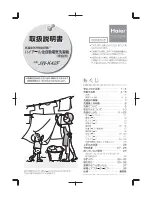
26
• When storing the product in temperatures of less than 0 °C for more than 30 days, pour a non-corrosive antifreeze
agent (e.g. ethylene glycol) into the water tank and distribute it throughout the interior of the appliance. This helps
to prevent the build-up of limescale deposits and stops the appliance from freezing.
• Apply a small amount of silicon paste to the spray nozzle if you are not going to use the appliance for a prolonged
period.
c) Using antifreeze agent
Do not use any highly reactive or corrosive antifreeze agents, as these may damage the pump.
Fill the water tank (4) with antifreeze agent to prevent the wash station from freezing in storage:
• Pour approximately 2.5 l of suitable antifreeze agent into the water tank.
• Attach the hose (6), power cable and spray gun (10).
• Turn the appliance on using the on/off switch (1).
• Pull the trigger (9) and wait until the nozzle (11) emits a steady stream of the antifreeze agent.
• Turn the appliance off using the on/off switch (1).
• Remove the hose, cable and attachment and place them into the storage pouch (5).
Remove the antifreeze agent from the water tank before using the wash station again:
• Attach the hose, power cable and spray gun.
• Turn the appliance on using the on/off switch.
• Pull the trigger and spray the contents of the water tank to remove any remaining antifreeze agent from the interior
of the appliance.
13. Troubleshooting
The pump doesn't work.
Is the appliance switched on?
Check that all cables and plugs are connected properly (including the cigarette lighter).
Check whether your vehicle's battery is empty.
The pump is working, but
there is no water coming
from the spray gun.
Check whether the spray nozzle (11) is blocked.
Check whether the hose connection (12) or filter (16) is blocked.
Check whether the hose (6) is twisted or bent.
















































